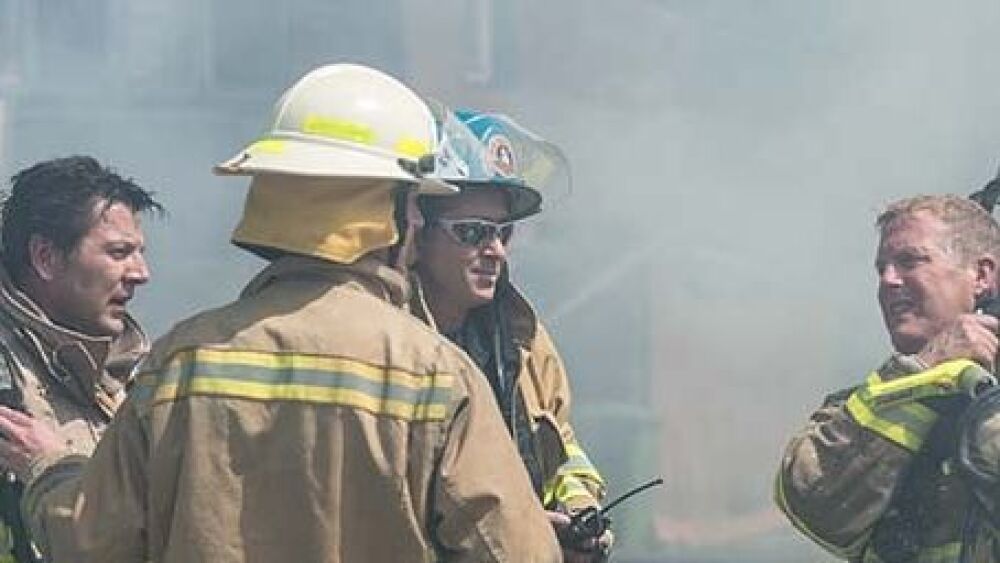Leadership is a multi-dimensional discipline, requiring adaptive style and function. What would it be like, if everybody was a pilot, flying their own plane with no crew or passengers? Or if every fire chief was a visionary, driving a fire engine with no crew?
Visionary Leadership is a series exploring how to balance the past, present and future, collaborating with fire officers and crew members to carry out a successful vision for the fire service based on my experiences throughout 38 years in emergency services.
Why do we use CVFSS nozzles? Why do we have to put numbers on the firetrucks? Why does it matter what color the smoke is? Why do we have to exercise? Why do we have a social media policy? Why are fires in bow-string truss occupancies so dangerous?
There are many questions in the fire service. I may not always know the answer to the question, “why ... ” but I’ll find out the answer. And not all of the questions require a complex scientific explanation – so let’s get to “why.”
Looking at the fire service leadership target – our “what,” “how” and “why” – I think we can all agree that almost everyone knows what we do, most people know reasonably well how we do it, yet few people seem to understand why we do it. In an altruistic para-military organization, one might strive for this paradigm, relishing a blind faith followership.
In the heat of the moment, sure, I’ll accept and expect that blind faith. We need to ensure our leaders and managers are properly trained and respected by the followers, who will follow those emergency orders without qualification ... and those are the truly important moments. They are, however, only moments in the hours upon hours we have together.
Focusing on effective utilization of the past will help mold a solid and productive future, while preserving history and tradition (at least the part the makes sense). I often lament that the past helps some people get to “why,” and thankfully the past also helps people question “why,” because, frankly, “that’s the way we’ve always done it” is a terrible answer to “why.” If the past was always the measure of the future, then we’d still use bucket brigades and horse-drawn steam engines to fight fires.
The evolving fire service mission
While there was a time in my career that I asked questions and followed orders, today’s firefighting workforce is considerably more adept at finding their own answers and questioning “why” far more frequently than I would have ever considered appropriate. This doesn’t make them wrong – their frequency helps me develop, in turn helping them get to the true “why” quicker than the fight would be worth.
It is important to acknowledge the dynamic nature of our business; always evolving and constantly adapting to new standards, products and conditions, in a highly digital-savvy society. Let’s look at four things fire chiefs need to do, to explain the “why” behind the fire service mission.
- Don’t expect blind faith. We would all like to think that everyone is fully functioning and on autopilot when they complete their initial training. The truth is, these people are sponges, ready to soak up everything you can give them. Use this sponge time to your advantage, taking ample time to explain the past, the science and the specifics at the same time you’re practicing the “what” and the “how.”
- Cultivate a sense of accomplishment. This is critically important to get to the “what” and the “how” of our business. It is equally as important to get our folks to understand the “why” quickly, so they can practice the “what”’ and the “how” – and who knows, maybe they’ll come up with a new “why.” Include others on the journey, allowing them the opportunity to answer their own questions with your mentoring and encouragement.
- Be the coach – crawl, walk, run. Much like an exercise program of tabletops, functionals and full-scale exercises; take the time to explain, do, complete and repeat. Take all reasonable time necessary to get to “why,” then let your folks demonstrate they get it.
- Take it personal, don’t make it personal. If you’re going to be effective at getting to “why,” you must own it and be part of it – be the mentor. It’s highly unlikely that anywhere near 100 percent of firefighters will be happy with simply following; get used to it. Understanding that, it’s also important to understand that fire chiefs are not here to make friends or excuses – you’re here to serve our communities and departments, and to move our organizations forward. Be a part of the answer to “why,” instead of being part of the question “why.”
In my 38 years in the fire service, the most consistent thing I’ve witnessed about the past has been change. I still ask “why” every day. The day I stop asking “why” is likely the day I’ll know it’s time to finally hang up the boots.
Toss old excuses, good ol’ boys networks
I recently lamented in an article how “this is no longer your grandfather’s fire department,” a sentiment which can provoke the proverbial pitchforks in favor of “that’s the way we’ve always done it.” Getting to “why” is part of understanding how ridiculous those pitchforks are.
We cannot embrace a past that killed proportionally higher numbers of us, and we cannot embrace a past that amounted to a good ol’ boys network where we only helped those we like get to “why.” We need to embrace what Grandma Jones needs – service-focused departments that just do the right thing (JDTRT), at the right time, for the right reasons. Getting your people to “why” is a big step in ultimately get them to JDTRT.
We’re failing our people, ourselves and our communities with the prevailing “that’s the way we’ve always done it” mantra. Challenge yourself to make a forward-looking-difference today.













